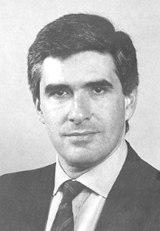History

The CCD was founded in January 1994 by members of Christian Democracy (DC) who opposed the party's transformation into the Italian People's Party (PPI), [5] and advocated an alliance with Silvio Berlusconi's Forza Italia (FI), which was launched on the same day, while the PPI advocated a centrist alliance with the Segni Pact called Pact for Italy. Its leaders were Pier Ferdinando Casini and Clemente Mastella. The CCD represented the right-wing of the defunct DC, [6] while the PPI was largely the heir of the party's left-wing, especially after the split of the United Christian Democrats (CDU) from the PPI in 1995.
In accordance with an agreement between the party presidents of CCD and PPI, the CCD "inherited" 15 percent of the DC's assets, while the PPI was awarded the remainder. [7] In the 1994 general election the CCD joined FI as a member of the Pole of Freedoms in Northern Italy and the Pole of Good Government in Southern Italy, [8] forming a joint list with FI, and gaining 27 deputies and 12 senators. After the election the CCD joined the Berlusconi I Cabinet, with Mastella minister of Labour and Francesco D'Onofrio minister of Education.
After the sudden fall of the government in December 1994, caused by Lega Nord's exit, a new general election took place in 1996. The CCD formed a joint list with the CDU. The alliance proved successful, gaining 5.8% of the vote, 30 deputies and 15 senators. However, as the centre-right lost the election to The Olive Tree centre-left coalition, the party was in opposition.
In 1998 Mastella and several MPs left the party to form, along with the CDU, the Christian Democrats for the Republic (CDR), which was later folded into the Democratic Union for the Republic (UDR) and supported the centre-left government led by Massimo D'Alema. In 1999 the UDR was transformed into the Union of Democrats for Europe (UDEUR), while the CDU was re-organised as an independent party and returned to the alliance with the CCD.
Once again, the CCD and the CDU formed a joint list (the so-called White Flower) for the 2001 general election, this time gaining only 3.2% of the vote, as part of the winning House of Freedoms coalition composed mainly of FI, National Alliance and Lega Nord. Casini was elected President of the Chamber of Deputies, while Carlo Giovanardi was appointed minister of Relations with Parliament in Berlusconi II Cabinet. In 2002 the CCD, the CDU and European Democracy (DE), which had won 2.3% in 2001, gave birth to the Union of Christian and Centre Democrats (UDC).